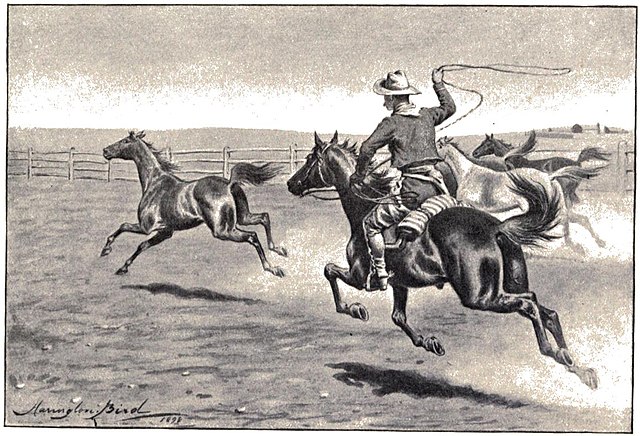There’s surely as much western frontier north of the 49th parallel as there is south, and Canada has had numerous writers setting their stories there. During the years
1880-1915, a dozen or more of them appeared to write from the mountains and timberland of BC, to the prairie, the border country
straddling the international boundary with Montana, all the way to the frozen Yukon.
 |
| Ralph Connor |
Ralph Connor
was the pen name of Charles William Gordon (1860–1937), a Presbyterian minister
of some prominence in Canada. The Sky
Pilot (1899) was the novel that made him
famous, selling over a million copies. It is set in a frontier community, Swan
Creek, in the foothills of the Rockies, west of Calgary.
Its characters are early settlers, ranchers, and cowboys,
and at the center of them is a church missionary, Arthur Wellington Moore, who
has been dubbed “the sky pilot.” Connor served 40 years as a minister at a
single parish in Winnipeg, Manitoba. In 1972 his Works, containing 43 titles, were published by the National
Library of Canada.
Bertrand Sinclair
(1881-1972) was born in Scotland and came to North America in 1889. He was a
young cowpuncher living in Montana when he wrote Raw Gold (1908)
set north of the border in the southern corners of what is now Alberta and
Saskatchewan.
The time is shortly after the arrival of the North-West Mounted
Police, and the entire story takes place within one or two days’ riding of Fort
Walsh in the Cypress Hills. We get the wide-open frontier of the 1870s with outlaws and
lawmen, stolen money, and an innocent fugitive wrongly accused of a crime.
After a brief marriage to western writer B. M. Bower, Sinclair settled in
British Columbia, where he continued to write.



.jpg)









.jpg/256px-The_Widow_(Boston_Public_Library).jpg)
.jpg/613px-Sauromalus_varius_(3).jpg)






.jpg)






